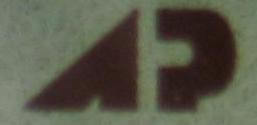Below you will find a list of Car Windshield Markings we put together from various sources, including the glass manufacturer names, sample images, and the info. If you have samples you would like to share, please send them to us.
| Name of Mark | Sample | Required? | Details |
|---|---|---|---|
| Name of Car Manufacturer |  |
No | For new cars, the top line normally has the manufacturer of the car. Presumably, this is only present on OEM windshields. This is apparently all letters (not the funky car manufacturer logo), but can be in the normal font for the car manufacturer. |
| Name/Logo of Glass Manufacturer |   |
US [Z26.1996] | This mark identifies the manufacturer, by their name and/or logo (“the manufacturer’s distinctive designation or trademark”). Common glass manufacturers include ASAHI and Nippon Safety. |
| Brand Name of Glass |  |
No | Often, the trademark name of the glass is present. This includes Temperlite, Lamisafe, Lamipane, and more. |
| AS Number | US [Z26.1996] | The AS number stands for American Standard, and is “AS” (or “American Standard”) followed by a number indicating the position in which the glass may be used, based on its optical quality. AS1 is the clearest glass (at least 70% light transmission), is laminated, and can be used anywhere in a motor vehicle (typically just the windshield), AS2 is tempered with at least 70% light transmissions, and can be used anywhere except the windshield, and AS3 can be used in certain locations in certain vehicles (and can be laminated or tempered, and has less than 70% light transmission). There are higher numbers used for other purposes, but are not normally encountered in cars. This number must be near the manufacturer’s name/logo, preferably below it (per Z26.1996). | |
| M Number | US [Z26.1996] | The M number is a model number for the piece of glass, which identifies the type of construction. The M number is unique to the manufacturer, so one an M number of M312 by one manufacturer could be different than glass labeled as M312 by another manufacturer. It identifies the glass construction, including the color and thickness. An M number may be used by multiple part numbers. | |
| DOT Code |  |
US FMVSS205 6.2] | The DOT code (DOT number) is the letters “DOT” followed by a number that the Department of Transportation (National Highway Traffic Safety Administration) assigns to the manufacturer of the glass. This is required by FMVSS205 section S6.2. If you have a DOT code, we have a page that lists all known DOT codes. |
| E Code | Yes, in EU | The E code (with a capital ‘E’) is used for cars in European countries, and indicates the country that certified the windshield. It is a circle with the capital letter E followed by a number. The codes are assigned by the United Nations Economic Commission for Europe.
E1 Germany E2 France E3 Italy E4 Netherlands E5 Sweden E6 Belgium E7 Hungary E8 Czech Republic E9 Spain E10 Serbia [and Montenegro] E11 United Kingdom E12 Austria E13 Luxembourg E14 Switzerland E16 Norway E17 Finland E18 Denmark E19 Romania E20 Poland E21 Portugal E22 Russia E23 Greece E24 Ireland E25 Croatia E26 Slovenia E27 Slovakia E28 Belarus E29 Estonia E31 Bosnia and Herzegovina E32 Latvia E34 Bulgaria E36 Lithuania E37 Turkey E39 Azerbaijan E40 Former Yugoslav Republic of Macedonia E42 European Community E43 Japan E45 Australia E46 Ukraine E47 South Africa E48 New Zealand E49 Cyprus E50 Malta E51 Republic of Korea E52 Malaysia E53 Thailand |
|
| e Code | No | According to this site, you may see a square containing a lowercase ‘e’ followed by a number indicating a country (which matches the countries listed in the ‘E Code’ section above). | |
| Type of Glass (Roman Numeral) | No | According to this site, if the windshield has the E code on it, you may see a number above the E code, in roman numerals, that is likely slanted. The codes mean:
/ Extra Durable Windshield // Regular Multiple Layer Windshield /// Multiple layer windshield that underwent special treatment IV Plastic Glass V Non-windshield glass, tinting less than 70% VI Double glass with tinting less than 70% None Non-windshields with tinting less than 70% |
|
| Month and Year of Production | According to this site, you may see the month and year of production, possibly at the bottom of the windshield marking. | ||
| Other Codes |
U - UV - UVS - |